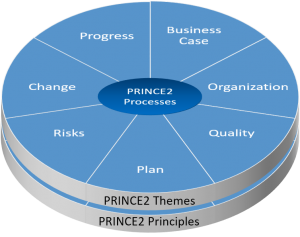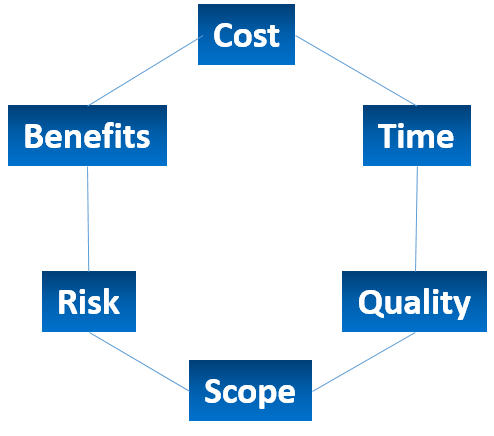One must have seen and heard how many projects have gone wrong, exceeding budgets and lost opportunities. Projects haven’t to be like these.
PRINCE2 is a structured method that gives very clear and very flexible approach
to running projects. PRINCE2 isn’t an extra overhead to be done, it’s a powerful toolset.
PRINCE2’s name comes from PRojects IN a Controlled Environment, and number 2 stands for version 2.
PRINCE2 has a long history and it’s track record is impressive. All started over 30+ years ago as a method called PROMPT II (PRoject Organisation, Management and Planning Technique) and it was developed by a private company. Later the UK government bought the rights to it for computer projects. A new government version was renamed PRINCE2. Later PRINCE2 was released publicly in 1996 and it was a generic project management method, suitable for all projects and not only IT projects.
PRINCE2 is a process-driven method which has seven principles, seven themes and seven processes (picture below).

The seven themes are:
- Business case
- Organization
- Quality
- Plan
- Risks
- Change
- Progress.
The seven key principles consists of:
- Continued business justification
- Learn from experience
- Clearly defined roles and responsibilities
- Manage by stages
- Manage by exception
- Focus on products/services
- Customized to suit the project/service development environment.
At the core is the seven processes: Starting up a project (SU), initiating a project (IP), directing a project (DP), controlling a stage (CS), managing a product/service delivery (MP), managing stage boundaries (MB) and closing a project (CP).
PRINCE2 has a total of six variables that need to be controlled and balanced (see picture below).

These previous areas interact, for example, if there is pressure on time then one might need to re-balance cost or quality or both.
PRINCE2 is a structured approach to project management. Advantages of using PRINCE2 is that it can be tailored and it’s scalable from small to big projects.







